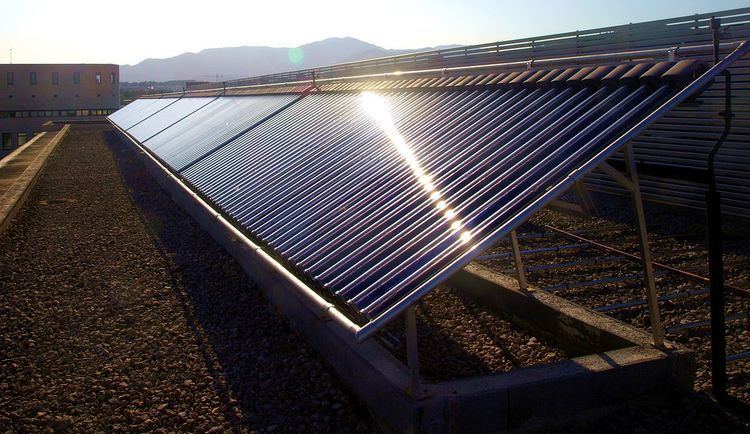 | ||
In solar thermal collectors, a selective surface or selective absorber is a means of increasing its operation temperature and/or efficiency. The selectivity is defined as the ratio of solar radiation-absorption (alpha) - to thermal infrared radiation-emission (epsilon).
Contents
Selective surfaces take advantage of the differing wavelengths of incident solar radiation and the emissive radiation from the absorbing surface:
Selective materials
Normally, a combination of materials is used. One of the first selective surfaces investigated was simply copper with a layer of black cupric oxide. Black chromium ("black chrome") nickel-plated copper is another selective surface that is very durable, highly resistant to humidity or oxidizing atmospheres and extreme temperatures while being able to retain its selective properties - but expensive. Another combination consists of steel plated with gold, silicon, and silicon dioxide.
Although ordinary black paint has high solar absorption, it also has high thermal emissivity, and thus it is not a selective surface.
Typical values for a selective surface might be 0.90 solar absorption and 0.10 thermal emissivity. but can range from 0.8/0.3 for paints on metal to 0.96/0.05 for commercial surfaces - and thermal emissivities as low as 0.02 have been obtained in laboratories.
Other selective surfaces
There exists other selective surfaces that are not normally used on solar thermal collector surfaces. E.g. low emissivity surfaces used in window glasses, which reflect thermal radiation and has a high transmittance factor (e.g. is transparent) to visible sunlight.
